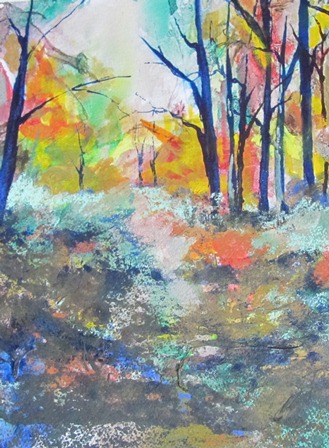|
|
HOW TO PAINT
With all skills there are rules and to ask 'How to Paint?' is a very good question. There is an age-old debate; can you teach someone to paint? There is a wealth of answers but I think most artists would agree that natural talent is very helpful and an eye for colour an asset but anyone who is keen to paint can improve by following what I would call Universal Painting Rules. These painting rules can be applied to whatever medium you use, ranging from oils to pastels; drawing to mixed media. As a landscape artist I will be exploring the, ' How to Paint' rules in relation to landscapes but they are just as relevant to still lifes, portraits or citiscapes. Following these rules and having them in your mind as you paint will help: FIRSTLY when planning your painting SECONDLY as you paint THIRDLY as you constantly assess your developing picture
I would like to add that not all artists would say these rules are essential but I believe they are extremely helpful; especially if you are new to painting and wish to improve. Also, once you really understand the effect on a painting of following some of these rules, then you can decide to ignore them or tweak them to create your own desired effect. Breaking the rules can add tension or an unsettledness for the viewer which can add a very powerful dimension to your picture.
Universal Painting RulesThese 'universal painting rules' are explained briefly below and then please follow the links to discover more. (They are not in any particular order)
Colour PerspectiveHow the choice and tone of colour helps the viewer read the perspective in your painting.
Colour Perspective
Guiding the EyeReading a painting or guiding the eye is all about how an artist can position the subject of their painting within the frame so the audience's eye is led around the picture.
Guiding the Eye
Point of InterestThe point of interest or area of interest is where the artist wishes the viewers eye to rest. It is the artists challenge to define and focus on this area of the painting.
Area of Interest
Shape and ProrportionHow to get a good balance of shape and proportion in your paintings.
Shape and Proportion
Light Source-A clear light source can help to make a great painting.
Contrast Of Light and DarkMake the contrast of light and dark help to make your paintings stand out.
|


